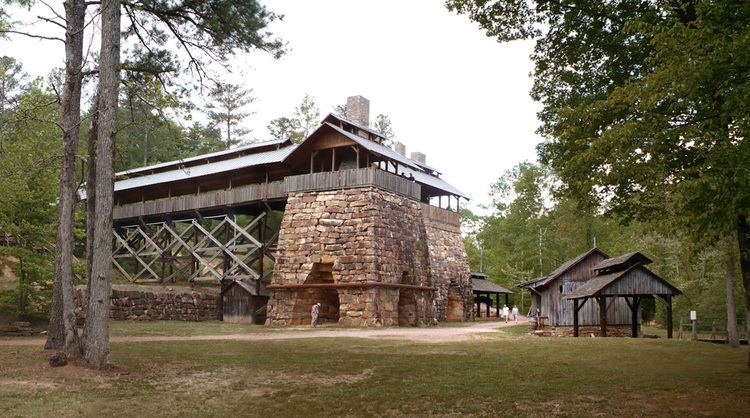Built 1859-62 NRHP Reference # 72000182 Phone +1 205-477-5711 | Built by Hillman, Daniel Area 8.349 km² Added to NRHP 24 July 1972 | |
 | ||
Website Tannehill Ironworks Historical State Park Hours Open today · 12:30–4:30PMSunday12:30–4:30PMMonday8:30AM–4:30PMTuesday8:30AM–4:30PMWednesday8:30AM–4:30PMThursday8:30AM–4:30PMFriday8:30AM–4:30PMSaturday8:30AM–4:30PMSuggest an edit Similar Wilson's Raid, Battle of Selma, Creek War, Battle of Hoover's Gap, Battle of Mobile Bay Profiles | ||
Tannehill ironworks historical state park
The Tannehill Ironworks is the central feature of Tannehill Ironworks Historical State Park near the unincorporated town of McCalla in Tuscaloosa County, Alabama. Listed on the National Register of Historic Places as Tannehill Furnace, it was a major supplier of iron for Confederate ordnance. Remains of the old furnaces are located 12 miles (19 km) south of Bessemer off Interstate 59/Interstate 20 near the southern end of the Appalachian Mountains. The 2,063-acre (835 ha) park includes the John Wesley Hall Grist Mill, May Plantation Cotton Gin House, and the Iron & Steel Museum of Alabama.
Contents
Tannehill ironworks al
History
Ironmaking at the site began with construction of a bloomery forge by Daniel Hillman Sr. in 1830. Built by noted southern ironmaster Moses Stroup from 1859 to 1862, the three charcoal blast furnaces at Tannehill could produce 22 tons of pig iron a day, most of which was shipped to the Naval Gun Works and Arsenal at Selma. Furnaces Nos. 2 and 3 were equipped with hot blast stoves and a steam engine. Brown iron ore mines were present two miles (3 km) distant.
The Tannehill furnaces and its adjacent foundry, where kettles and hollow-ware were cast for southern troops, were attacked and burnt by three companies of the U.S. 8th Iowa Cavalry on March 31, 1865 during Wilson's Raid. The ruins remain today as one of the best preserved 19th-century iron furnace sites in the South.
Also known as the Roupes Valley Iron Company, these works had significant influence on the later development of the Birmingham iron and steel industry. An experiment conducted at Tannehill in 1862 proved red iron ore could successfully be used in Alabama blast furnaces. The test, promoted by South & North Railroad developers, led to the location of government-financed ironworks in the immediate Birmingham area (Jefferson County).
The furnace remains and its reconstructed portions were named an American Society for Metals historical landmark in 1994. The park is a designated Civil War Discovery Trail site, a stop on the Alabama Appalachian Highlands Birding Trail, and was listed among the top 10 Alabama parks and nature areas visited in 2016.
